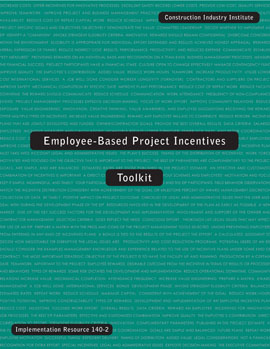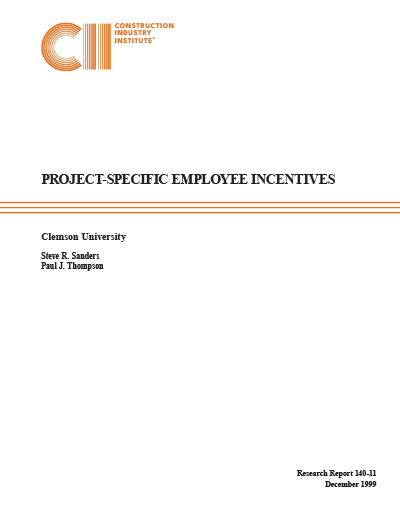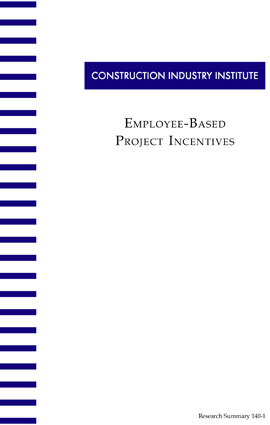
Employee-Based Project Incentives Toolkit
An incentive is defined as “something, such as a punishment or reward, that induces action.” Incentives are encountered every day—we hope to get a pay raise because of job performance, or we stay within a posted speed limit because we are afraid of getting a speeding ticket.
Incentives are now commonplace in engineering and construction projects. Efforts to date, however, have focused primarily on incentives at the company level, e.g., an owner provides a contractor with a monetary incentive for meeting a certain completion date. Little documentation exists regarding the effects of applying incentives that are provided directly to individuals or groups of individuals (project team, specific craft, discipline group) based on results achieved on a project.
This toolkit focuses specifically on developing Employee Incentives Plans (EIPs) for individuals or groups of individuals who are working on a specific engineering and/or construction project. It does not address annual bonus plans or other similar performance incentives; rather, its application is limited to developing an employee incentive plan for a one-time project of defined scope and duration.
Sample Objectives, Incentives, and Results
Employee incentives tied to safety performance have been used for many years, with good success. Few companies, however, have tried linking employee incentives to other performance factors. The more successful programs have established a direct relationship between the project objectives and the performance criteria used to determine the incentive payout. This direct relationship helps in four ways. First, it forces management to clearly establish project objectives and the performance criteria required to achieve them. Second, it helps the employees to better understand the project objectives and the employees’ direct impact on project success. Third, it helps the employees to maintain their focus on the project objectives because the EIP provides continuous feedback on their level of performance, which in turn has a direct impact on project success. Fourth, independently of the type of contract, it is important to define who will be in charge of the EIP, and who will pay for it. The ideal situation is that the EIP driving company (owner or contractor) will take the lead and fund the program. This will ensure that the objectives of the EIP are aligned with the objectives of the EIP driving company.
IR140-2, Employee-Based Project Incentives Toolkit
The toolkit provides three phase process for determining if a project is appropriate for an employee-based incentive program, and assisting in developing, managing, and evaluating the success of such a program. The toolkit includes:
- Worksheet: Is my Project Ready for an Employee Incentive Plan (EIP)?
- Project Eligibility Matrix
- Legal and Administrative Issues Checklist
- Incentive Plan Evaluation



